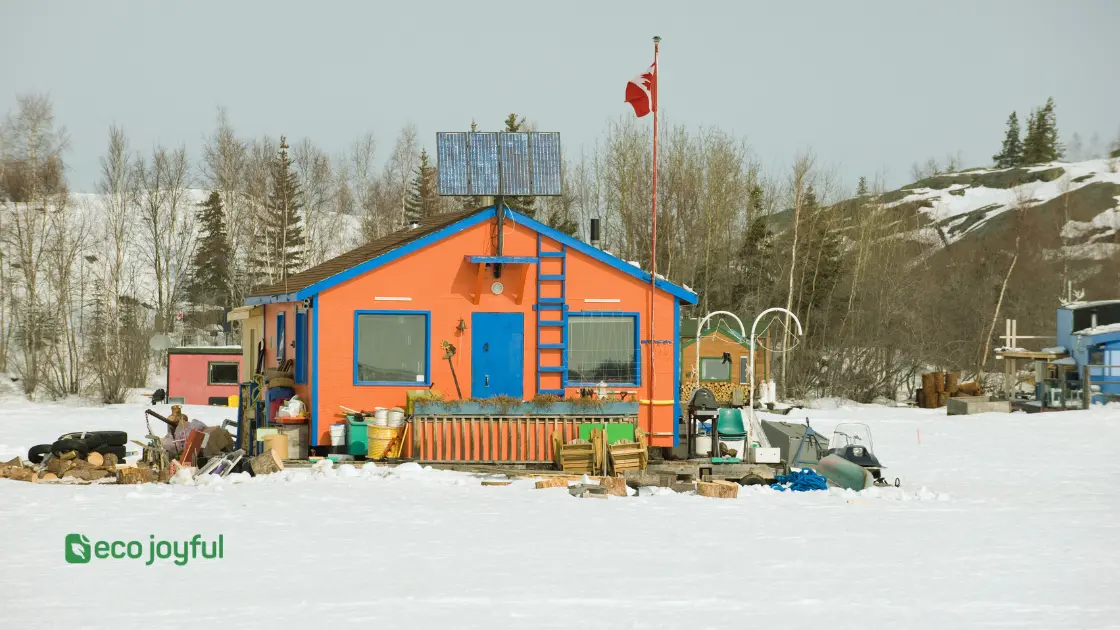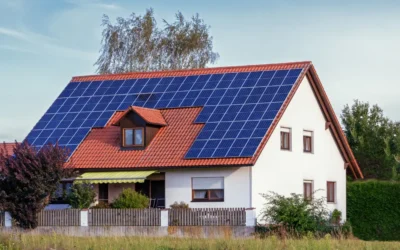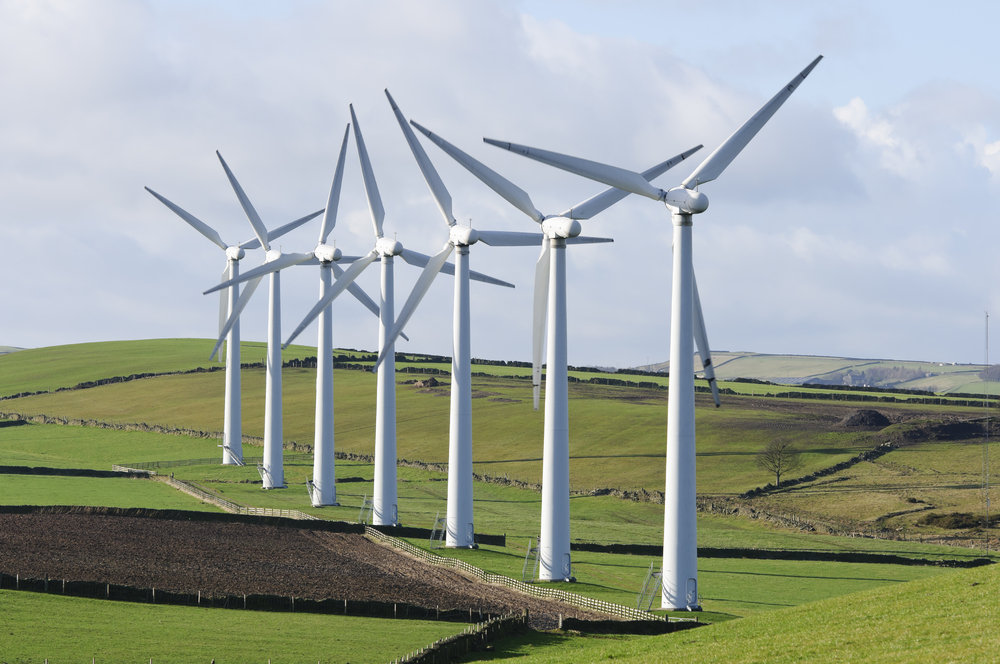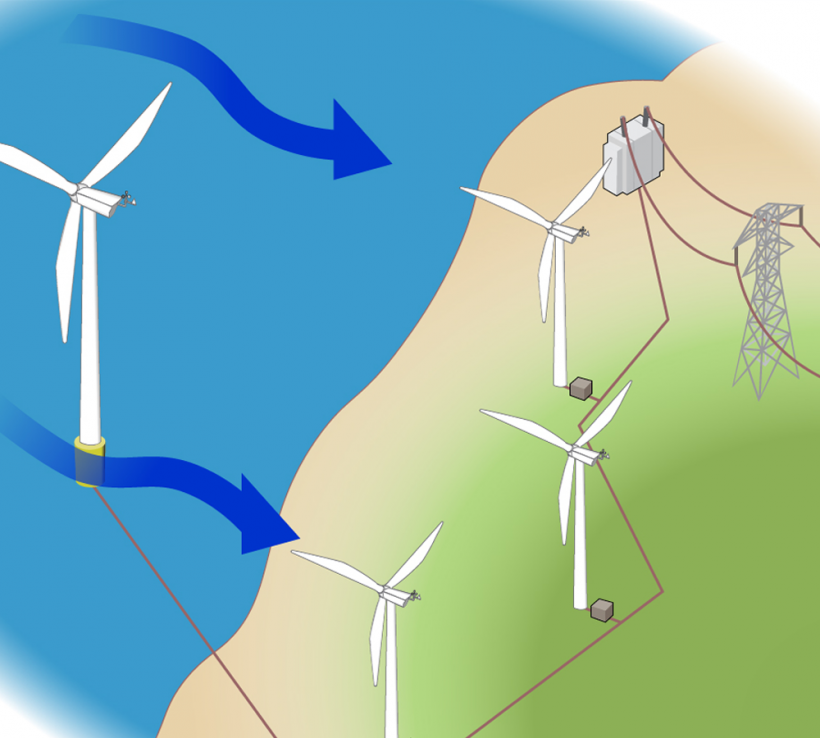A small wind turbine is a great option for powering your home sustainably and reducing your reliance on the grid. With a maximum of 20 words in each sentence, this concise and SEO-friendly answer highlights the main point: small wind turbines can provide clean energy for your home.
If you’re looking to power your home sustainably and reduce your reliance on the grid, a small wind turbine is an excellent option. These compact turbines harness the power of the wind to generate clean energy for your household needs.
Combining environmental benefits with potential cost savings, small wind turbines offer a compelling solution for homeowners seeking to embrace renewable energy sources. In this guide, we will explore the advantages of small wind turbines, discuss their installation and maintenance considerations, and provide tips for selecting the right turbine for your home. With the rising popularity of sustainable living, integrating a small wind turbine into your home’s energy system could be a smart and eco-friendly choice.
Table of Contents
Advantages Of Small Wind Turbines For Home
Small wind turbines can be a game-changer for homeowners seeking sustainable and cost-effective energy solutions. These compact devices harness the power of the wind to generate electricity that can be used to power various household appliances and reduce dependence on conventional energy sources. Let’s explore the key advantages that small wind turbines offer for home use.
Renewable Energy Source
Small wind turbines utilize a renewable energy source – the wind. Unlike fossil fuels such as coal and oil, wind energy is a clean and abundant resource that does not deplete with usage. Harnessing the power of the wind allows homeowners to generate electricity in an environmentally friendly way, reducing their carbon footprint and contributing to a more sustainable future.
Cost Savings
Investing in a small wind turbine for home use can lead to significant cost savings in the long run. By generating your own electricity, you become less reliant on power grid infrastructure and minimize your monthly energy bills. Additionally, some regions offer incentives such as tax credits and feed-in tariffs for renewable energy generation, further reducing the overall cost of installing and maintaining the small wind turbine.
Reduced Carbon Footprint
Using a small wind turbine to generate electricity at home contributes to a reduced carbon footprint. As wind turbines produce electricity without emitting greenhouse gases or pollutants, they help combat climate change and reduce air pollution. By adopting this sustainable energy solution, homeowners play an active role in protecting the environment and improving air quality in their communities.
Factors To Consider Before Installing A Small Wind Turbine
When considering installing a small wind turbine for your home, there are several important factors to take into account. This article will delve into the key considerations that you should keep in mind before venturing into harnessing wind power for your residential property.
Available Wind Resource
Assessing the available wind resource is vital before deciding to install a small wind turbine. You should have consistent and adequate wind speed in your area to generate enough electricity. Consider consulting a professional to conduct a wind study or refer to wind speed maps to evaluate the wind potential at your location.
Space And Zoning Restrictions
Evaluating your property’s available space and adhering to zoning restrictions is crucial for wind turbine installation. Ensure that sufficient space is available for the turbine to operate effectively and that your property conforms to zoning regulations for the installation of wind energy systems.
Local Regulations And Permits
Understanding the local regulations and obtaining the necessary permits for installing a small wind turbine is imperative. Contact local authorities to familiarize yourself with any zoning restrictions, noise regulations, and height limitations. Additionally, ensure that you secure all required permits before commencing with the installation.
Maintenance And Upkeep
Considering the maintenance and upkeep requirements of a small wind turbine is essential. You must be prepared to perform routine maintenance such as lubrication, regular inspections, and addressing wear and tear to ensure the turbine’s longevity and optimal performance.
Choosing The Right Small Wind Turbine For Your Home
When it comes to harnessing renewable energy for your home, small wind turbines are a popular choice. They offer an eco-friendly solution that can help reduce your reliance on conventional energy sources. If you’re considering installing a small wind turbine, it’s essential to choose the right one that suits your specific energy needs. In this article, we’ll explore the key factors to consider when selecting a small wind turbine for your home.
Assessing Energy Needs
Before investing in a small wind turbine, it’s important to assess your energy needs. Determine the amount of electricity you require on an average day. Consider factors such as the number of occupants in your home, typical energy-consuming appliances, and the average monthly energy consumption. By understanding your energy needs, you can choose a small wind turbine with the appropriate power output to meet your requirements.
Size And Power Output
The size and power output of a small wind turbine are crucial factors to consider. A turbine’s power output is generally measured in kilowatts (kW) and indicates the amount of electricity it can generate. Assessing your energy needs will help you determine the optimal power output required. Additionally, consider the size of the turbine, ensuring it is suitable for your property and conforms to local regulations.
Rotor Design And Efficiency
The rotor design and efficiency of a small wind turbine play a significant role in its performance. Different turbines have varying rotor designs and blade shapes, which can impact their efficiency in harnessing wind energy. Look for turbines that have been tested and certified by recognized organizations to ensure optimal performance and efficiency.
Noise Levels
Noise levels can be a concern when installing a small wind turbine in a residential area. While modern turbines are designed to operate quietly, it’s still crucial to consider the noise levels produced by the turbine you choose. Check the manufacturer’s specifications for noise emissions and consider any local regulations regarding noise restrictions for wind turbines in residential areas.
Warranty And Customer Support
As with any significant investment, it’s important to consider the warranty and customer support offered by the turbine manufacturer. A standard warranty typically covers defects in materials and workmanship for a specific period. Additionally, reliable customer support ensures that any issues or concerns you may have can be promptly addressed by the manufacturer’s service team.
Choosing the right small wind turbine for your home involves careful consideration of several factors. By assessing your energy needs, considering the turbine’s size, power output, rotor design and efficiency, noise levels, as well as warranty and customer support, you can find a small wind turbine that is suitable for your home and contributes to a greener energy future.
:max_bytes(150000):strip_icc()/wind-turbine-generator-on-house-roof-90967703-b9619befbf954726ae92dfb6154711f2.jpg)
Credit: www.treehugger.com
Installation And Setup Of A Small Wind Turbine
Installing a small wind turbine at home is an excellent way to harness renewable energy and reduce your carbon footprint. While the process may seem complex, it can be broken down into several key steps. In this article, we will guide you through each stage of installation and setup, from site evaluation and wind assessment to electrical connection and safety considerations. Let’s get started!
Site Evaluation And Wind Assessment
Before installing a small wind turbine, it is crucial to evaluate your site and assess the wind conditions. You need to ensure that your location receives enough wind to generate sufficient power. Here are the key factors to consider:
- Position: Choose an area that is free from obstacles such as trees, buildings, or hills that may obstruct the wind flow.
- Elevation: Higher elevations generally have stronger and more consistent winds, making them ideal for wind turbine placement.
- Wind Speed: Assess the average wind speed at your site using a wind anemometer. Aim for a minimum average speed of 6 to 9 miles per hour for optimal power generation.
- Direction: Determine the prevailing wind direction to position your turbine accordingly. The turbine should be facing directly into the wind to maximize efficiency.
Foundation And Tower Installation
Once you have identified a suitable site, it’s time to prepare the foundation and install the tower:
- Excavation: Dig a hole of appropriate depth and width for the foundation. The size will depend on the wind turbine’s specifications.
- Foundation: Pour concrete into the hole to create a solid foundation for the tower. Ensure it is level and properly cured before proceeding.
- Tower Assembly: Assemble the tower components according to the manufacturer’s instructions. This may involve attaching sections and securing them with bolts.
- Tower Installation: Use a crane or winch to lift the tower and carefully position it onto the foundation. Ensure it is securely anchored and aligned.
Electrical Connection And Inverter Setup
After the tower is in place, it’s time to connect the electrical components and set up the inverter:
- Wiring: Connect the wiring from the turbine to the charge controller, ensuring proper gauge and insulation.
- Charge Controller: Install the charge controller, which regulates the power flowing from the wind turbine to the battery bank.
- Inverter: Connect the inverter to the battery bank, converting the direct current (DC) generated by the turbine into alternating current (AC) for household use.
Safety Considerations
When installing and setting up a small wind turbine, safety should be a top priority. Here are some essential safety considerations to keep in mind:
- Professional Assistance: If you are unfamiliar with electrical and structural work, it is recommended to seek professional assistance for installation.
- Height Safety: If working at heights, use appropriate personal protective equipment (PPE) such as harnesses and safety lanyards.
- Electrical Safety: Follow electrical wiring guidelines, ensuring proper grounding and insulation to prevent the risk of electric shock.
- Regular Maintenance: Conduct regular inspections and maintenance to ensure the turbine is functioning optimally and address any potential safety issues.
By following these installation and setup steps and adhering to safety precautions, you can harness the power of the wind and generate renewable energy for your home. With a small wind turbine, you can reduce your dependence on traditional energy sources and contribute to a greener future.
Maintenance And Troubleshooting Of Small Wind Turbines
Maintain and troubleshoot small wind turbines for home use effortlessly with our comprehensive guide. Keep your energy source running smoothly with expert tips and tricks.
Maintenance and troubleshooting are crucial aspects of ensuring the optimal performance and longevity of small wind turbines for your home. By adhering to a regular maintenance schedule and promptly addressing any issues, you can maximize the efficiency of your small wind turbine system. In this section, we will discuss the key practices for maintaining and troubleshooting small wind turbines, covering regular inspections and cleaning, monitoring performance and output, identifying and fixing common issues, and professional maintenance services.
Regular Inspections And Cleaning
Regular inspections and cleaning are essential to keep small wind turbines operating efficiently. Inspect the turbine for any signs of damage, wear, or corrosion on a monthly basis. Ensure that the blades are free from debris and dirt, and clean them using a mild detergent and water as needed. Check and tighten any loose bolts or connections to maintain the structural integrity of the turbine.
Monitoring Performance And Output
Monitor the performance and output of your small wind turbine system regularly to ensure it is functioning optimally. Keep track of the energy production and compare it to the expected output. Utilize a monitoring system to gather data on the turbine’s performance, including wind speed, power output, and any fluctuations in operation. Analyze this data to identify any irregularities or dips in performance that may indicate potential issues.
Identifying And Fixing Common Issues
Be vigilant in identifying and addressing common issues that may arise with small wind turbines. Look out for symptoms of wear on the turbine blades, such as erosion or chipping, and address them promptly to prevent further damage. Check the connections and electrical components for any signs of corrosion or loose connections, and address these issues to maintain the electrical efficiency of the system. Regularly maintain the yaw system, brakes, and other mechanical components to prevent malfunctions.
Professional Maintenance Services
Engaging professional maintenance services can provide additional support for the upkeep of your small wind turbine. Consider scheduling periodic inspections and maintenance checks with experienced technicians who specialize in small wind turbine systems. These professionals can conduct comprehensive evaluations of the turbine’s components, identify potential issues, and perform necessary maintenance tasks to ensure continued performance and longevity.
By implementing these maintenance and troubleshooting practices, you can maximize the efficiency and lifespan of your small wind turbine for home use. Regular inspections, monitoring, and proactive maintenance measures are key to ensuring that your small wind turbine continues to generate clean, renewable energy for years to come.
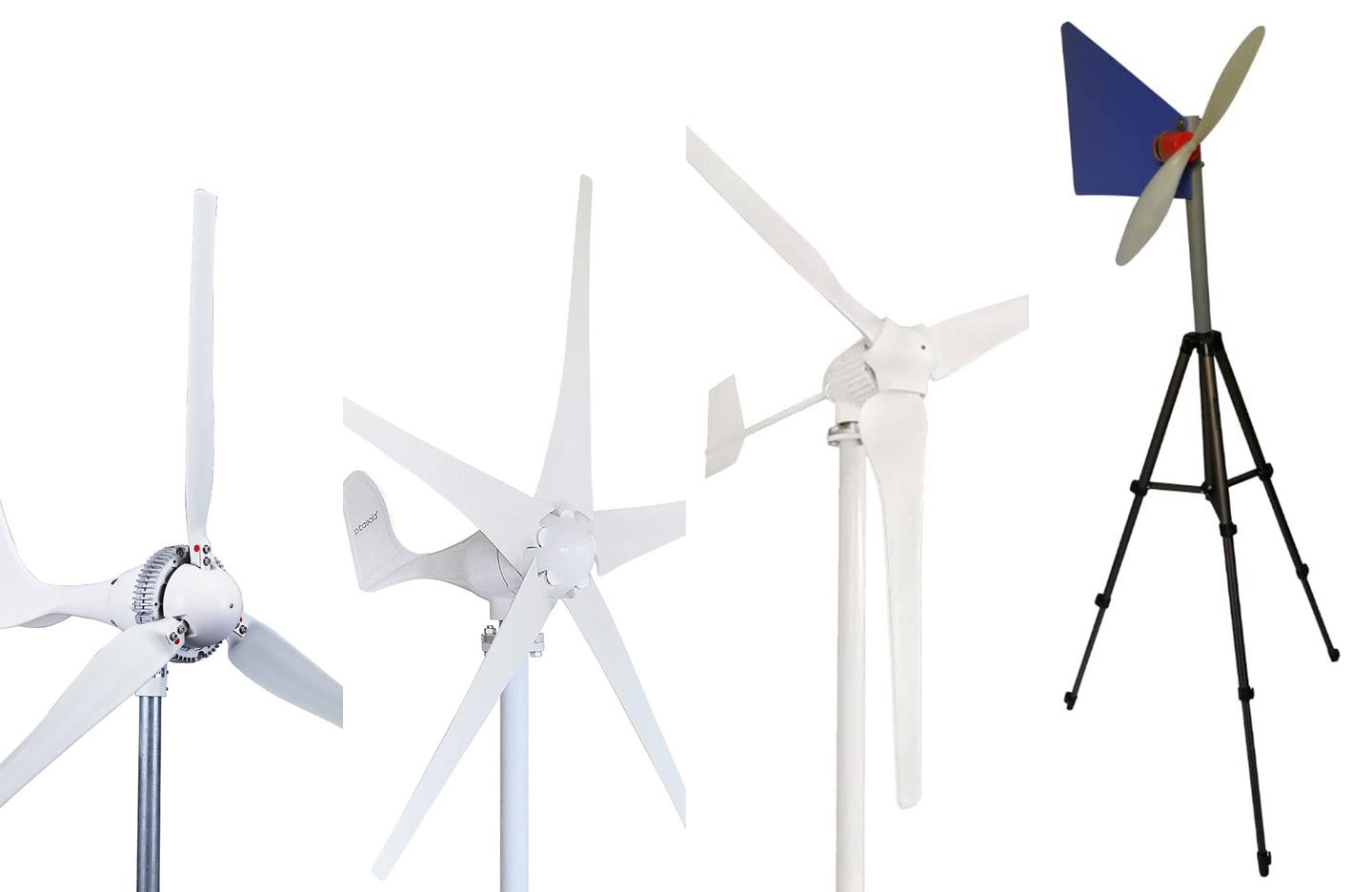
Credit: www.popsci.com

Credit: m.youtube.com
Conclusion
Small wind turbines offer an eco-friendly and cost-effective way to power homes. With minimal maintenance and government incentives, they are a viable energy solution. By harnessing the power of the wind, homeowners can reduce their carbon footprint and energy bills, contributing to a sustainable future.



